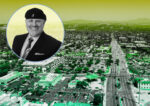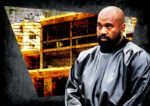Trending
Reality bites
Celebrity chef Geoffrey Zakarian on TV stardom, new restaurants and NYC’s changing dining scene
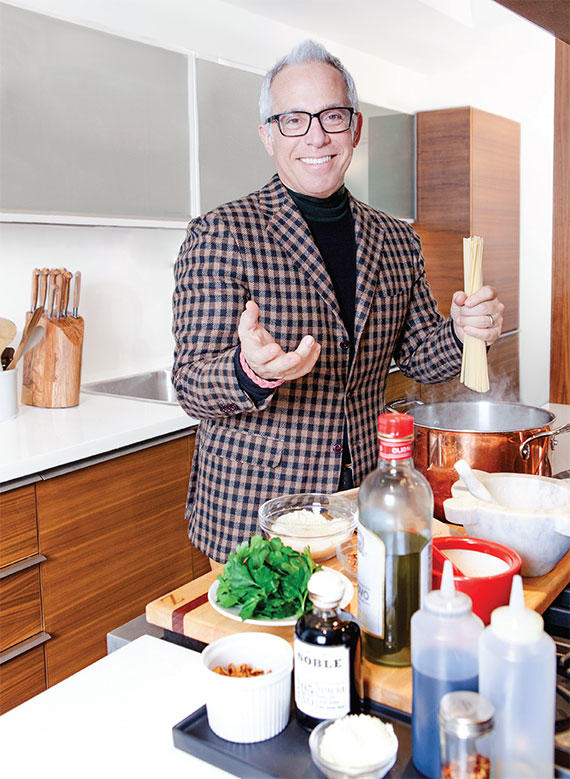
It may be hard to remember, but there was a time not long ago when fine dining options in New York City weren’t unlimited. Back then, there were just a handful of noteworthy, foreign-born chefs, cooking in a few truly good restaurants. Diners may or may not have known the chef’s name.
How quaint.
Today, of course, the cult of celebrity has descended upon the chef and New York City’s restaurant dining scene has seen an explosion of both talent and choice.
Consider the experience of chef, restaurateur and reality TV star Geoffrey Zakarian, one of the lions to emerge from the city’s restaurant boom.
“When I came to New York 38 years ago, you could easily identify all the best restaurants in the city. There were five and they were all French,” said Zakarian. “Now there are 27,000 restaurants here, and so many of them are good. It’s incredible what’s happened here.”
While that may be a dash of hyperbole, it is clear that after a succession of hit restaurants, a pinch of controversy and an ample dose of celebrity exposure, Zakarian has played an important role in that three-decades-in-the-making culinary upswing.
These days, the sharply-dressed chef is known for his executive-friendly Midtown hotel-restaurants the Lamb’s Club and the National, as well as his no-BS persona on cable cooking shows such as “Chopped,” “The Next Iron Chef,” “Top Chef,” “Hell’s Kitchen” and “The Kitchen.”
But when Zakarian began sharpening his knives in the late 1980s — long before the Food Network turned chefs into household names — he never expected to escape the obscurity of the kitchen, or leave the restaurant office for the spotlight. After all, with the exception of breakthrough public television cooks like Julia Child and Jacques Pépin, there was no mainstream platform for chefs in the media. Cable television would change that.
“I never saw this coming,” he said, adding that his celebrity status has allowed him to build a minor empire. “Going from being the chef of one restaurant can’t compare to having an impact on multiple restaurants.”
“It gave me a lot of opportunities to do stuff on TV that I didn’t have before,” he said. “TV has been a blessing because it is great coverage for my restaurants.”
And he isn’t nostalgic for those long, hectic days spent sweating over a stove. “Now the biggest waste of my time is to cook in my own restaurants,” he said with a smile. “The best use of my time is to teach my chefs and imbue into them what I know. I spend a lot of time just tasting things with my executive chefs. It’s all about teaching that memory of taste, the taste I want people to experience in my restaurants. I love to teach.”
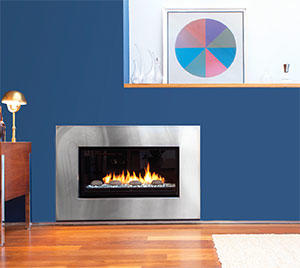
Photography by STUDIO SCRIVO
But even the teacher must be taught, and Zakarian’s education started early. As a child in Worcester, Mass., he was reared on his mother’s home-cooked Armenian meals like stuffed peppers, lamb, green bean stew, and barley and yogurt soup.
As a lifelong libertarian, he initially planned to study economics. (To this day, Zakarian’s dream dinner guests are conservative economist Milton Friedman and Frank Sinatra. “Milton Friedman was a free soul libertarian, who believed in doing what you want, not harming others and letting markets work. Frank Sinatra lived that,” he said.) But on a trip to France at age 22 — where he dined at 18 of the 21 three-star restaurants in the country — Zakarian had an epiphany: He preferred basting and battering to bears and bulls.
Zakarian enrolled in the Culinary Institute of America in Hyde Park, N.Y., and after graduation, zeroed in on a titan of Midtown’s upscale dining scene, Le Cirque — Sirio Maccioni’s famed French bistro. After optimistically submitting a job application to the restaurant, and being rejected, he proposed to work unpaid. With that magic offer, he was made an apprentice to Le Cirque’s master chef Alain Sailhac, next rising to pastry sous chef and eventually to chef de cuisine.
His success at Le Cirque led to executive chef positions at other Midtown institutions, such as 44 in the Royalton Hotel, Patroon on East 46th Street and the iconic 21 Club. From his new perch overseeing Manhattan’s power-lunch crowd, he sought to remake the standard menu.
His deconstructed American food whet the appetites of experienced eaters and expense-account diners alike, just as so-called foodies were really going mainstream. In the late ’90s, the New York Times wrote that “Zakarian seems to have his finger on the pulse of Manhattan, and he has produced a remarkably smart menu [at Patroon]. It is American without being hokey, rich without being fussy.”
Nearly two decades on, that balance is still at play in prototypical Zakarian dishes like Long Island duck breast with a leg confit crepe, served with a beet, fennel and black truffle sauce and Amish chicken with cipollini onion, salsify, braised celery, chestnut and green peppercorn.
Over the past 20 years, he’s opened four restaurants in Manhattan and Tudor House at Miami’s Dream South Beach. In 2013 he was appointed the culinary director of the Plaza hotel, where he oversaw the painstaking overhaul of the historic Palm Court.

Photography by STUDIO SCRIVO
“It was excruciatingly difficult to restore. It was a landmark landmine,” Zakarian said of the intense oversight by city’s preservation commission. “When you have a landmark building, no one wants to touch it, but when you touch it you get known for it.”
Now, under its elaborate, colored-glass ceiling, amongst its leafy palms, patrons can sip a $3,000 Sidecar cocktail made with 100-year-old cognac that manages to make the hotel tea room’s $75 Blood and Sand look like a bargain.
But certainly his signature effort is the Lamb’s Club at the Chatwal Hotel in Times Square — an exacting renovation of a Stanford White-designed men’s club, which counted silver-screen stars such as Charlie Chaplin, John Wayne and Lionel Barrymore as members. The Lamb’s Club became a popular lunch spot for Times Square-based media industry big shots like Anna Wintour and Stefano Tonchi.
Here, Art Deco design meets a clubby 1950s ambiance; serving as an alternative Condé Nast cafeteria, ideal for a laidback yet highbrow lunch for the likes of Tommy Hilfiger, Jason Wu or Michael Kors.
But many, including the New York Times, have speculated that the Lamb’s Club has fallen on hard times since Condé Nast moved its offices downtown to One World Trade Center, something which Zakarian vehemently denies. “People just talk. It is completely untrue,” Zakarian said, adding that he has no intention of opening a restaurant near Condé Nast’s new offices.
“We always say that you’re only as good as your last meal,” Zakarian’s wife and partner, Margaret Anne Williams, said. The couple married in 2005, after fittingly meeting in the chic downtown restaurant Indochine.
Looking back, Zakarian’s Howard Roarkish-individualism and cocksure attitude seems almost too perfectly groomed for reality television — but it wasn’t a path he actively pursued. “The transition to TV was a fluke. It just happened,” Zakarian said. “My star was rising in the food world and ‘Chopped’ asked me to be in the pilot, and it worked out.”
From “Chopped,” a reality cooking competition show, Zakarian embraced the medium, leaving the judges’ table to compete on “The Next Iron Chef” — which he won.
Bolstered by his fame — he says that young fans regularly stop him in the street for a picture or an autograph — Zakarian opened a “food studio” in the 50s on Manhattan’s East Side last year. The two-floor, multi-use office, test kitchen and event space allows him to manage his 600-plus employees, operate his restaurants, cook and appear in film shoots, all from one location. It’s also the headquarters for a new, yet-to-be-named American cafe in the works for Greenwich, Conn.
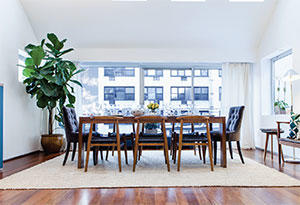
Photography by STUDIO SCRIVO
Superfans and well-heeled members of the public can even rent out the space for cooking classes and dinner parties hosted by Zakarian himself — a testament to his growing stardom.
He sees the evolution of the chef from glorified cook to celebrity as something of a promotional miracle for both chefs and the city, but one that comes with challenges and indignities.
“On ‘Chopped’ I had to eat all kinds of shit,” Zakarian said. “I’ve had to eat whale sperm, raw lambs’ testicles and bugs. But it isn’t that the ingredients are so bad, it’s that these people don’t know how to cook. Some of these guys are fancy chefs at major restaurants in major cities, and they just suck.”
Zakarian also fears that the city’s ballooning restaurant industry could deflate under the current administration.
“Our mayor [Bill de Blasio] is anti-business and it will kill the city. He’s forcing through wage provisions, healthcare and paid sick days. We just can’t afford it. Restaurants are going to go out of business and people will be out of work,” Zakarian said.
Clearly, Zakarian revels in a brawl. To this interviewer, he read aloud some of his favorite Hollywood insults: Ava Gardner on Frank Sinatra’s marriage to Mia Farrow (“I always knew Frank would end up in bed with a boy.”) and Sir John Gielgud on Ingrid Bergman (who “speaks five languages and can’t act in any of them.”).
“You know what Walter Matthau said about Barbra Streisand? ‘I have more talent in my smallest fart than you have in your entire body.’ There are a lot of people I feel like that about,” he said.
But in the city’s cutthroat restaurant business, a bit of pugilism may simply help ensure survival. “You can’t make mistakes. If you make mistakes you’ll die. New York City is punishingly expensive and there are unlimited alternatives for diners,” he said. “I don’t eat humble pie.”

